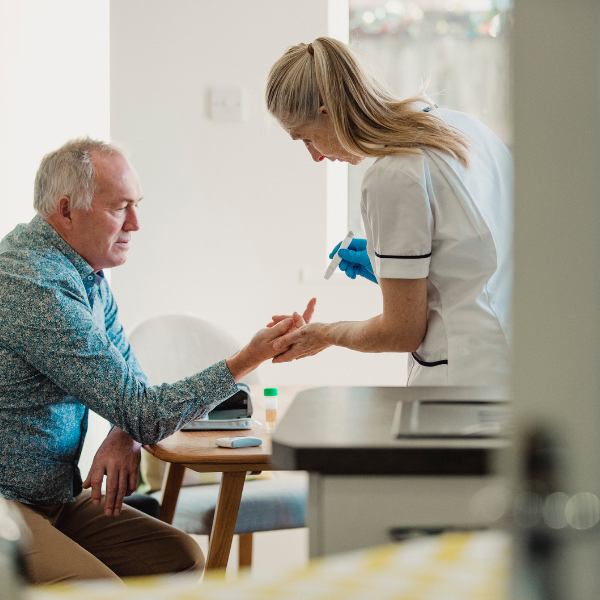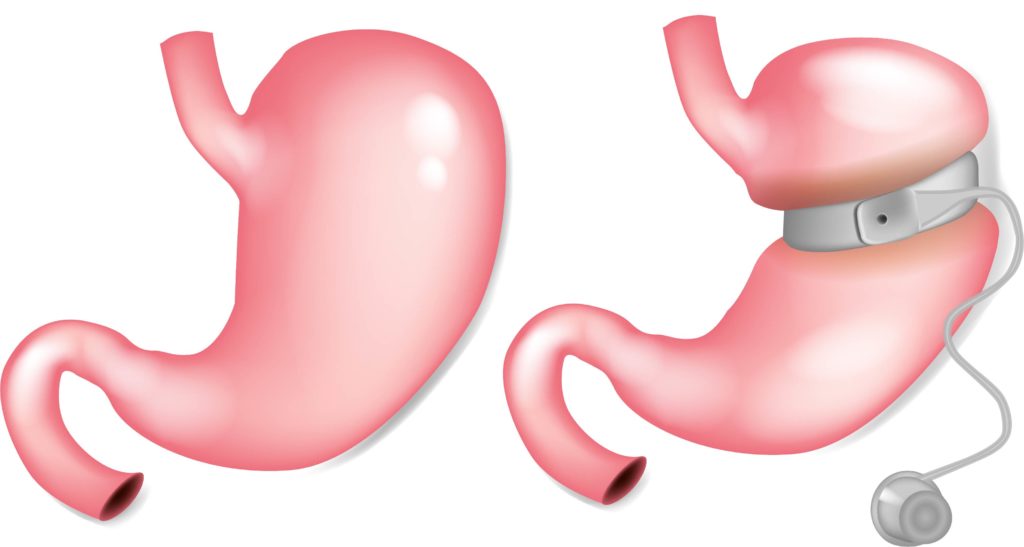
The Science Behind Gastric Bypass Surgery
October 20, 2023
Are You A Good Gastric Sleeve Surgery Candidate?
November 30, 2023Today, Type 2 Diabetes is a growing concern worldwide. Closely associated with obesity, it poses a significant public health challenge but also, of course, has a major impact on the lifestyle of individuals with the condition. Type 2 Diabetes is a chronic illness characterised by the body’s poor blood sugar management. Symptoms include excessive thirst, tiredness and poor bladder control. Unchecked, the condition can lead to serious complications like heart disease, metabolic health problems, kidney dysfunction, nerve damage and blindness. Gastric band surgery is growing in popularity as support to individuals managing Type 2 Diabetes. In this quick introduction, our team will explore the potential benefits of this type of weight loss surgery.

Understanding Type 2 Diabetes
Before diving into the potential benefits of gastric band surgery, it’s important to have a foundational understanding of Type 2 diabetes. This metabolic disorder is primarily associated with the absence of appropriate insulin sensitivity. Insulin is the hormone responsible for regulating the body’s blood sugar levels. A lack of insulin results in excessive glucose in the bloodstream and serious health consequences.
The treatment for Type 2 Diabetes is typically strict diet control, insulin injections and a regime of blood sugar testing to maintain healthy glucose levels. While this treatment assists in controlling blood sugar levels, it often falls short of providing a sustainable long-term solution as many sufferers find it challenging to adhere to the lifestyle changes required.
How Obesity Affects Blood Sugar Management
Obesity significantly impacts your body’s blood sugar management because excess fat has been shown to cause insulin resistance. As cells become less responsive to insulin, blood sugar levels rise. Obesity also triggers inflammation and the release of fatty acids into the bloodstream, further impairing insulin function. As a result, managing blood sugar becomes challenging if you are overweight which, in turn, may mean a requirement for higher insulin doses or medications. Additionally, obesity-related complications like high blood pressure and high cholesterol can compound the diabetes risks.
Weight loss through lifestyle changes, such as reduced fat, carbohydrate and calorie intake and increased exercise is proven to help manage the effects of Type 2 Diabetes. Should such changes prove challenging, bariatric procedures like gastric band surgery can play a pivotal role too.
How Gastric Band Surgery Can Help
Gastric band surgery, also known as laparoscopic adjustable gastric banding (LAGB), is a surgical procedure that can help Type 2 Diabetes patients who have struggled to control the disease with additional insulin alone. This surgical intervention entails placing a silicone band around the upper portion of the stomach, creating a small pouch that restricts food intake. The band is adjustable, enabling personalised modifications to accommodate individual needs.
Gastric band surgery typically leads to rapid improvement in blood sugar levels. Many patients witness immediate enhancements in their diabetes control following the procedure. The smaller stomach pouch created by the gastric band limits the quantity of food that can be consumed in a single meal. This restriction leads to reduced calorie intake, which aids in lowering blood sugar levels. A smaller stomach also means a sense of fullness after eating less. The temptation to overindulge in high-carbohydrate and sugar-heavy meals disappears.

To check if gastric band surgery could help you, it is vital to understand the changes required in your diet and weight to keep the disease in check and discuss your diabetes diagnosis with a medical professional. Results will depend on the type and severity of your diabetes, your age, how long you’ve lived with the condition, the presence of any complications and your overall health and well-being.
The Gastric Band Surgery Procedure
Gastric Band surgery is a relatively minor, but complex procedure undertaken under general anaesthetic. Typically, patients will go through the following steps.
Preoperative Evaluation: Before undergoing gastric band surgery, or any bariatric weight loss surgery, patients generally ought to undergo a thorough evaluation to determine their suitability. This includes assessing their body mass index (BMI), overall health, and previous weight loss efforts. Candidates typically have a BMI of 30 or higher and may have obesity-related health issues but each patient is clearly unique.
Anaesthesia: The surgery is performed under general anaesthetic ensuring the patient is unconscious and pain-free during the procedure.
Laparoscopic Approach: Gastric band surgery is minimally invasive. It is performed through small incisions in the abdomen. Surgeons use specialised instruments and a laparoscope, a thin tube with a camera, to visualise and access the surgical area.
Placement of the Gastric Band: The surgeon creates a small pouch at the top of the stomach by placing an adjustable silicone band around it. This band is connected to a small port that remains beneath the skin but is accessible to healthcare providers. The band can be inflated or deflated by adding or removing saline through the port. This adjusts the tightness of the band and its effect on food intake.
Restricting Food Intake: The band, once fitted, restricts food intake. The smaller stomach pouch created by the band limits the amount of food that can be comfortably consumed leading to earlier feelings of being full and reduced calorie intake.
Surgical Closure: After placing the band and ensuring it is correctly positioned, the surgeon securely closes the incisions using stitches or surgical staples.
Recovery and Hospital Stay: Patients typically spend a day or two in the hospital after the procedure to monitor their condition and ensure they can tolerate liquids without any complications. Most patients can return home within 24 to 48 hours.
Postoperative Care: Follow-up appointments are crucial to assess the patient’s progress, adjust the band if needed, and provide guidance on dietary changes and lifestyle modifications. Patients will need to adapt to a new way of eating and choose nutrient-dense foods to maximize weight loss, minimise complications and maximise the surgery’s positive impact on Type 2 Diabetes control. Although all surgery comes with risks, having a gastric band fitted is generally considered a safe and straightforward procedure.
Post Weight Loss Surgery Care

As gastric bands are adjustable, they allow for long-term personalised weight loss progress. However, to remain successful over time it is essential to understand that results depend on sticking to a post-surgery eating regime.
Immediately following the surgery it is likely patients will be asked to gradually transition from a liquid to a solid diet. After that phase, strict portion control and chewing food thoroughly to prevent complications like band slippage or stomach irritation remain important. A smaller stomach may impact the levels of nutrients and vitamins patients can ingest naturally. This means supplements may form part of any post-surgery diet.
Regular follow-up appointments with healthcare providers are also essential to assess band adjustments, monitor weight loss progress and address any issues. Patients should also maintain an active lifestyle and engage in physical activity to support weight loss and overall health. Diligent adherence to these post-surgery care instructions is crucial in achieving the desired results, ongoing weight control and Type 2 Diabetes management.
Conclusion
Gastric band surgery represents a promising avenue for individuals struggling to manage Type 2 diabetes. Its ability to rapidly improve blood sugar control through sustainable weight loss offers clear long-term benefits. However, it is not a one-size-fits-all solution and consultation with medical professionals, ongoing follow-up care and lifestyle changes are essential for success. The good news is, if you are considering gastric band surgery to improve your health, you can talk to our team today. Why wait?
